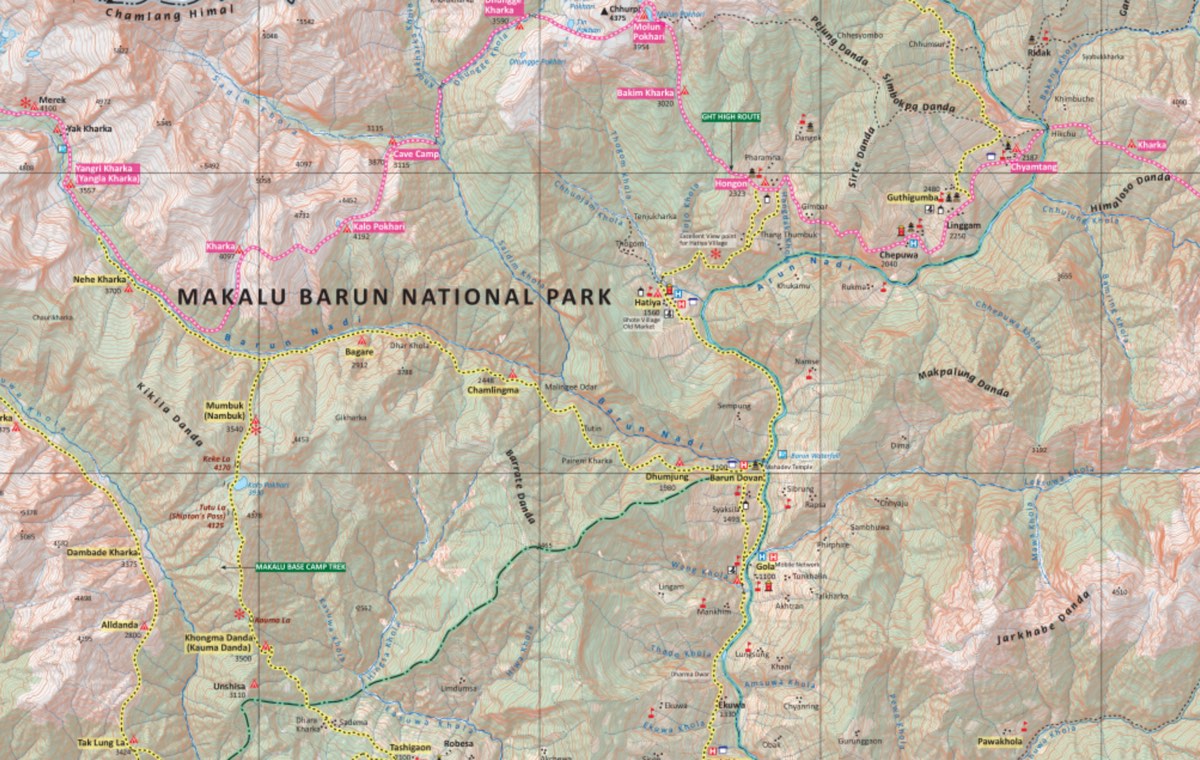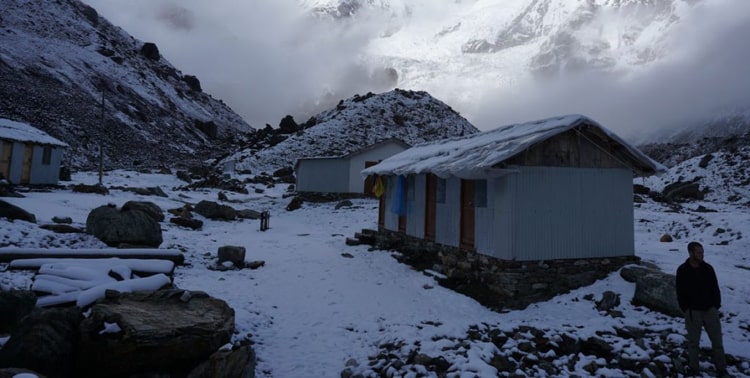Lumba Sumba Pass Trek
Request a Quote (?)
- Satisfied Client
- Personalised Guide
- Instant Response
Get Instant Response:
+977-9851329446 (Whatsapp)
| Starts at: Bhadrapur | Ends at: Tumlingtar |
| Trek Region: Makalu & Kanchenjunga | Transport: Flight |
| Duration: 19 days | Trip Grade: Strenuous |
| Max Altitude: 5070 m / 16634 ft | Accommodation: Camping |
The Lumba Sumba Pass trek was only opened in 2012 so it is a relatively unknown trek. The trek connects the Kanchenjunga region and Makalu region via the Lumba Sumba Pass, and runs through the Kanchenjunga Conservation Area and the Makalu Barun National Park in the eastern part of the country and can be done in one of two directions: starting in either Kanchenjunga or in Makalu.
Highlights of this trek include the Lumba Sumba Peak (5,300m); spectacular Himalayan landscapes of the Makalu and Kanchenjunga ranges; different ethnic villages (Limbu, Sherpa, Rai, Gurung, Tamang); cultural heritage; endangered wild life such as the snow leopard and red panda; the base camps of Mount Kanchenjunga and Mount Makalu, and major river systems. With the huge variety of landscapes and natural beauty, and its sometimes harsh and less than good condition trails, it is no surprise that this is a strenuous trek, therefore it is recommended people tackling this trek have prior experience.
While the majority of the trek passes through scattered pockets of human habitation in the form of villages, monasteries, markets and schools, there are days when trekkers are completely alone in the wilderness, particularly on the most difficult day – when they cross through the Lumba Sumba Pass. In order to cross the pass, the day starts very early as after noon, due to weather conditions, it is difficult to cross.
During these days off the beaten track there has been sightings of snow leopards, which would certainly add a new excitement to the journey! After crossing the pass, while hiking through the Arun Valley, there is opportunity for bird watchers to spot several unique and rare species. This is the ideal trek to enjoy spectacular mountain views and learn something about village life in eastern Nepal, throwing in a cultural mix of chortens, temples, monasteries and prayer wheels.
Lumba Sumba Pass Trek Outline Itinerary
Day 1: Kathmandu to Bhadrapur (Flight)
Bhadrapur – 93 m / 305 ft – 1 hr
Day 2: Bhadrapur to Taplejung (Drive)
Taplejung – 1820 m / 5971 ft – 9 hrs
Day 3: Taplejung to Chirwa
Chirwa – 1270 m / 4166 ft – 6 hrs
Day 4: Chirwa to Lelep
Lelep – 1860 m / 6102 ft – 6 hrs
Day 5: Lelep To Illa Danda
Illa Danda – 2051 m / 6729 – 6 hrs
Day 6: Illa Danda To Selep Kharka
Selep Kharka- 2525 m / 8284 ft 6 hrs
Day 7: Selep Kharka To Olangchung Gola
Olangchung Gola – 3208 m / 10524 ft – 7 hrs
Day 8: Acclimatization Day
Olangchung Gola – 3208 m / 10524 ft – 2 hrs
Day 9: Olangchung Gola To Upper Langmale
Upper Langmale – 3893 m / 12772 ft – 7 hrs
Day 10: Upper Langmale To Lumba Sumba Pass Camp
Lumba Sumba Pass Camp – 4748 m / 15577 ft 6 hrs
Day 11: Lumba Sumba Pass Camp To Chauri Kharka
Chauri Kharka – 4598 m / 15085 ft – 10 hrs
Day 12: Chauri Kharka To Thudam
Thudam – 3500 m / 11482 ft – 7 hrs
Day 13: Thudam To Kharka
Kharka – 2877 m / 9483 ft – 6 hrs
Day 14: Kharka To Chyamtang
Chyamtang – 2229 m / 7312 ft – 6 hrs
Day 15: Chyamtang To Hatiya
Hatiya – 1595 m / 5232 ft – 6 hrs
Day 16: Hatiya To Gola
Gola – 1128 m / 3700 ft – 6 hrs
Day 17: Gola To Hedangna Gadi
Hedangna Gadi – 1179 m / 3868 ft – 7 hrs
Day 18: Hedangna Gadi To Num To Tumlingtar (Drive)
Tumlingtar – 1020 m / 3346 ft – 6 hrs
Day 19: Tumlingtar To Kathmandu (Flight)
Kathmandu – 1300 m / 4265 ft – 50 mins
Not satisfied with this Itinerary?
Are you interested on planning custom trip? It only takes 2 minutes.
Includes
- 16 nights accommodation in tents
- 2 nights accommodation in Bhadrapur
- Guide for 19 days
- Cook for 19 days
- Required number of porters for 19 days
- Kathmandu Bhadrapur Flight
- Tumlingtar Kathmandu Flight
- Makalu Barun national park permit
- Restricted area permit
- 19 x set breakfast, 18 x set lunch and 18 x set dinner while on trek
- Lunch and dinner in Kathmandu
Lumba Sumba Pass Trek Map

